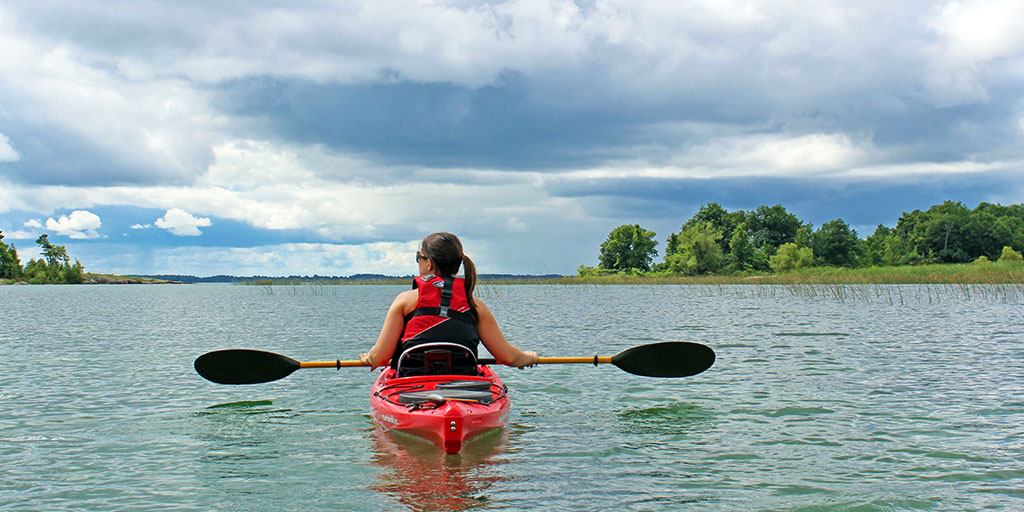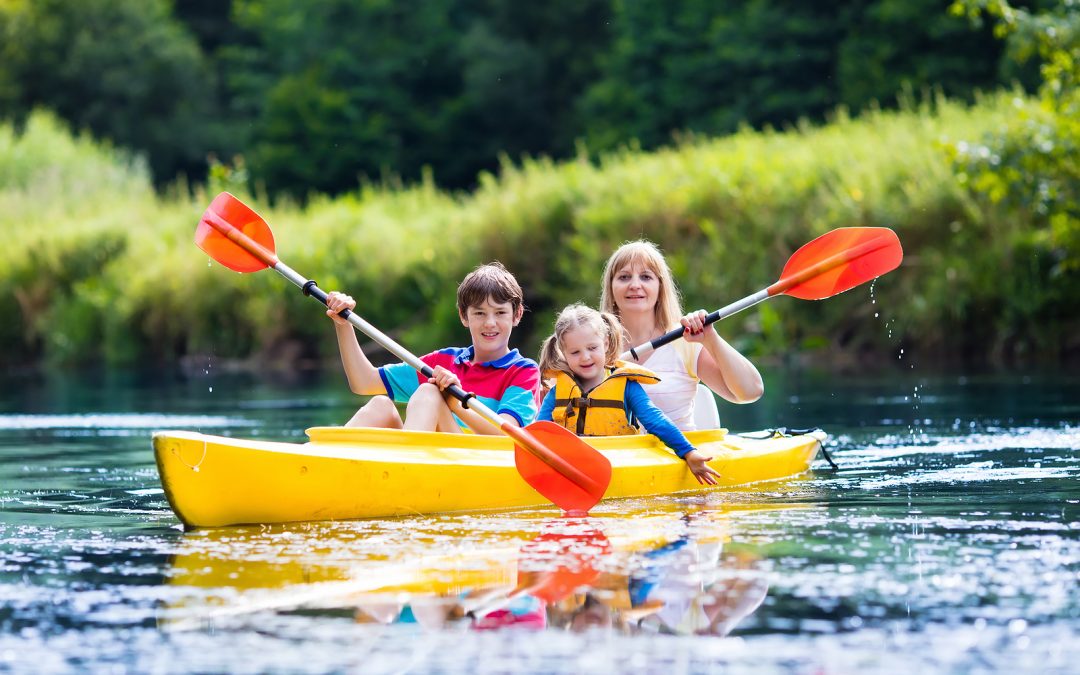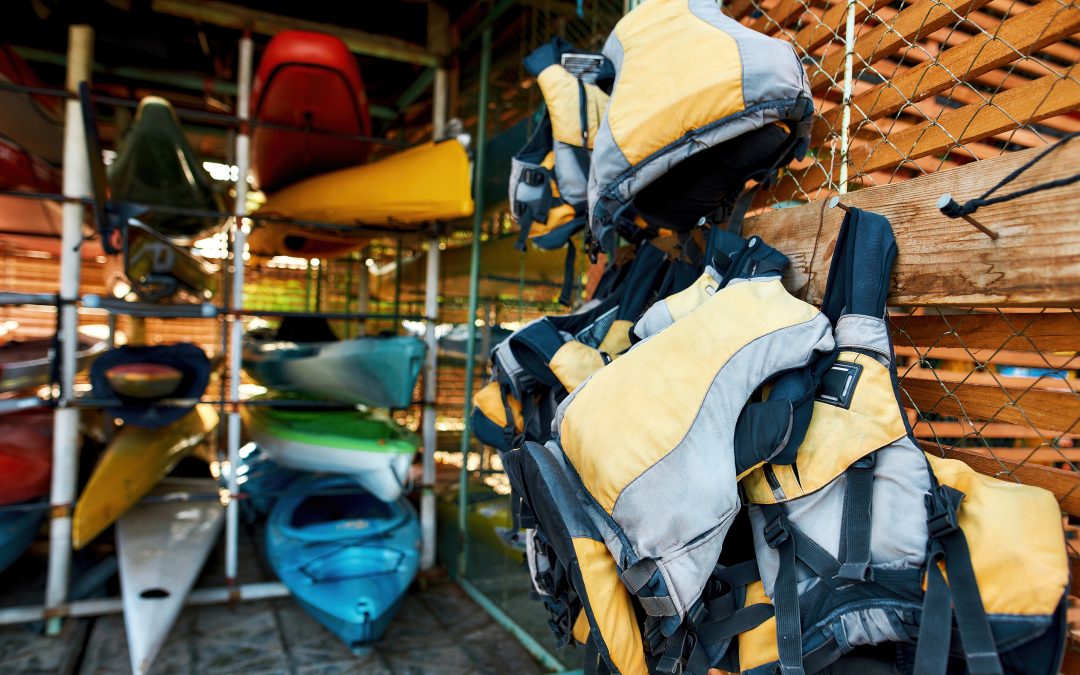Inflatable kayaks have become increasingly popular due to their convenience, portability, and affordability. They are lightweight and easy to store, making them an ideal option for those with limited space. However, many people still need to be convinced about their safety and durability, wondering if they are a good investment in the long run.
Regarding safety, inflatable kayaks are generally considered safe as long as they are used correctly and in appropriate conditions. It is essential always to wear a personal flotation device (PFD) and to choose waters that match your skill level. Checking the weather in advance and taking kayak lessons can also help prevent accidents. Additionally, it is crucial to choose a high-quality inflatable kayak made of durable materials with multiple air chambers to keep it afloat in case of punctures or tears.
Durability is another important consideration when it comes to inflatable kayaks. While they may not be as sturdy as traditional hard-shell kayaks, they can still last many years if they are well-maintained and properly used. It is essential to follow the manufacturer’s instructions for inflation and deflation, as well as for cleaning and storage. Choosing a kayak made of high-quality materials and reinforced seams can also help ensure its longevity.
Understanding Inflatable Kayaks
Inflatable kayaks are popular for recreational paddling, fishing, and touring. They are lightweight, portable, and easy to store, making them a convenient option for those who don’t have space to store a traditional hard-shell kayak. In this section, we will discuss the different types of inflatable kayaks and the materials and construction used to make them.

Types of Inflatable Kayaks
There are several types of inflatable kayaks available on the market. The most common types are recreational, touring, and whitewater kayaks.
Recreational inflatable kayaks are designed for calm waters like lakes and slow-moving rivers. They are typically wider and shorter than touring kayaks, making them more stable and maneuverable. Recreational kayaks are an excellent choice for beginners and casual paddlers.
Touring inflatable kayaks are designed for longer trips and more challenging water conditions. They are longer and narrower than recreational kayaks, which makes them faster and more efficient. Touring kayaks often have a higher weight capacity, allowing paddlers to carry more gear for extended trips.
Whitewater inflatable kayaks are designed for rapids and fast-moving water. They are shorter and more maneuverable than touring kayaks, allowing paddlers to navigate through tight spaces and over obstacles. Whitewater kayaks are typically made from more durable materials to withstand the rugged conditions of whitewater paddling.
Materials and Construction
Inflatable kayaks are made from various materials, including PVC, nylon, and rubber. The most common material used is PVC, which is durable and affordable. PVC kayaks are made by welding or gluing together multiple layers of PVC to create the hull and chambers.
Nylon kayaks are another option, lighter and more compact than PVC kayaks. Nylon kayaks are made by coating the fabric with a layer of polyurethane to make it waterproof. Nylon kayaks are less durable than PVC kayaks and are more susceptible to punctures and tears.
Rubber kayaks are the most durable option, resisting punctures and abrasions. Rubber kayaks are made from natural or synthetic rubber and are typically more expensive than PVC or nylon kayaks.
Inflatable kayaks are constructed with multiple air chambers, providing added safety in punctures or leaks. If one chamber is damaged, the other will keep the kayak afloat. It is important to properly inflate and maintain the kayak to ensure all chambers function correctly.
In conclusion, inflatable kayaks are a versatile and convenient option for paddlers of all skill levels. By understanding the different types of inflatable kayaks and the materials and construction used to make them, paddlers can make an informed decision when choosing the right kayak for their needs.
Safety Considerations
When considering the safety of inflatable kayaks, there are several factors to keep in mind. Two of the most important considerations are stability, buoyancy, and weather and water conditions.

Stability and Buoyancy
One of the main concerns regarding inflatable kayaks is their stability and buoyancy. While traditional hard-shell kayaks are known for their stability, inflatable kayaks can be more prone to tipping over. However, this is only sometimes the case. Many inflatable kayaks have multiple air chambers that add stability and buoyancy. Additionally, inflatable kayaks are often more comprehensive than traditional kayaks, which can help with stability.
It is important to note that the level of stability and buoyancy can vary greatly depending on the specific model of the inflatable kayak. Before purchasing an inflatable kayak, it is recommended to research the specific model and read reviews from other users to get an idea of its stability and buoyancy.
Weather and Water Conditions
Another important safety consideration when using an inflatable kayak is the weather and water conditions. Inflatable kayaks are best suited for calm water conditions such as lakes, ponds, and slow-moving rivers. They may need to be better suited for more challenging water conditions, such as whitewater rapids or choppy ocean waters.
It is essential to always check weather and water conditions before heading out on the water. Inflatable kayaks should only be used in conditions that are appropriate for their design and capabilities. Additionally, it is essential to wear appropriate safety gear, such as a personal flotation device (PFD), and to have a basic understanding of water safety and rescue techniques.
Inflatable kayaks can be a safe and enjoyable way to explore the water. However, it is vital to remember the specific safety considerations that come with using an inflatable kayak and always prioritize safety when out on the water.
Durability Concerns
Inflatable kayaks have come a long way in terms of durability, but it’s still important to consider the materials and construction of the kayak before making a purchase. Here are some important durability concerns to remember when selecting an inflatable kayak.
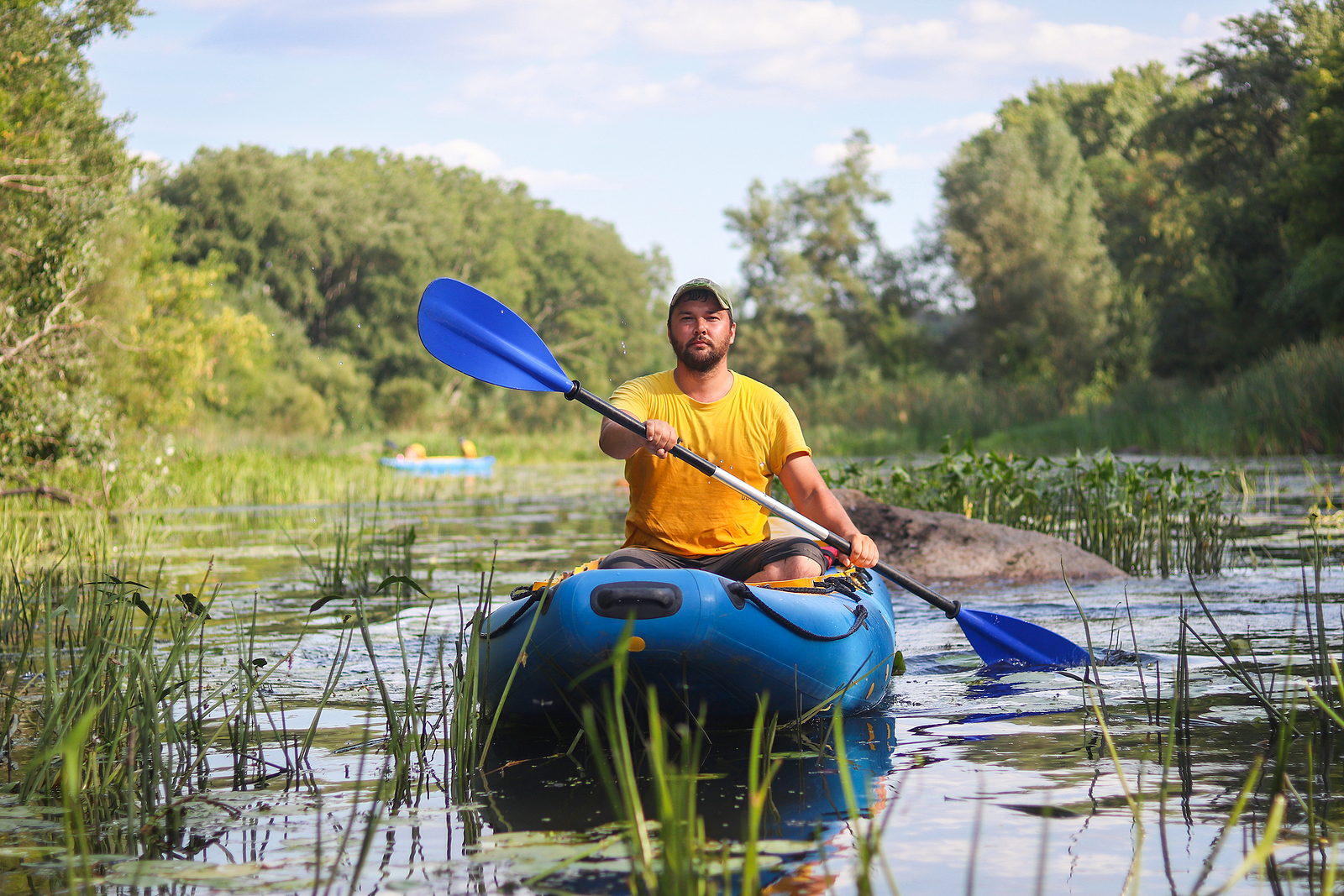
Resistance to Punctures
One of the biggest concerns with inflatable kayaks is the risk of punctures. However, many modern inflatable kayaks are made with durable materials resistant to punctures. For example, some kayaks are made with PVC or nylon materials that can withstand rough terrain and sharp objects.
It’s important to note that even the most durable inflatable kayaks can still be punctured if they come into contact with sharp objects or rough terrain. To minimize the risk of punctures, it’s important to avoid dragging the kayak over rocks or other sharp objects. Additionally, carrying a repair kit with you is a good idea in case of punctures.
Longevity
Another important consideration when selecting an inflatable kayak is longevity. While inflatable kayaks can last many years with proper care, some models may be more durable than others. It’s essential to look for kayaks with reinforced seams and high-quality materials that can withstand regular use.
One way to ensure the longevity of your inflatable kayak is to maintain it properly. This includes cleaning the kayak after each use, storing it in a dry and cool place, and avoiding exposure to extreme temperatures or direct sunlight.
Wear and Tear
Finally, it’s vital to consider wear and tear on your inflatable kayak. Regular use can cause wear and tear on the kayak, impacting its durability. Look for kayaks with reinforced areas prone to wear and tear, such as the bottom of the kayak or the seams.
To minimize wear and tear on your kayak, following the manufacturer’s instructions for care and maintenance is essential. This may include avoiding exposure to extreme temperatures, properly inflating and deflating the kayak, and avoiding overloading the kayak with heavy gear or passengers.
Overall, inflatable kayaks can be a durable and reliable option for paddling enthusiasts. By considering your kayak’s materials, construction, and care, you can ensure that it will last for many years of enjoyable paddling.
Maintenance and Care
Proper maintenance and care are essential for ensuring the longevity and safety of your inflatable kayak. Here are some tips to help you keep your kayak in top condition.

Proper Storage
When not in use, storing your inflatable kayak properly is essential. This will help prevent damage to the kayak and ensure it is ready for your next adventure. Here are some things to keep in mind:
- Store the kayak in a cool, dry place away from direct sunlight.
- Store the kayak in a bag or container to protect it from dust, dirt, and other debris.
- Do not store the kayak where sharp objects can puncture or damage it.
Cleaning
Keeping your inflatable kayak clean is essential for both safety and appearance. Here are some tips for cleaning your kayak:
- After each use, rinse the kayak with fresh water to remove salt, sand, and other debris.
- Use mild soap and water to clean the kayak, avoiding harsh chemicals that can damage the material.
- Rinse the kayak thoroughly with fresh water after cleaning to remove any soap residue.
Repair
Even with proper care, your inflatable kayak can become damaged. Here are some tips for repairing your kayak:
- Use a repair kit designed explicitly for inflatable kayaks.
- Follow the instructions carefully when making repairs.
- Only use the kayak once the repair has been completed and the material has fully cured.
By following these tips for maintenance and care, you can ensure that your inflatable kayak remains safe and durable for many future adventures.
Choosing the Right Inflatable Kayak
When choosing the right inflatable kayak, there are a few considerations to remember. This section explores two main factors: Purpose and Use and Budget and Quality.
Purpose and Use
Before purchasing an inflatable kayak, it’s essential to consider the purpose and use of the kayak. Will it be used for calm lake paddling, whitewater rafting, or fishing? Different kayaks are designed for different purposes, and choosing the right one for your needs is crucial.
A recreational inflatable kayak may be the best option if you plan to use the kayak for calm lake paddling. These kayaks are typically broader and more stable, making them easier to maneuver on calm waters. On the other hand, if you’re planning to tackle whitewater rapids, a whitewater inflatable kayak is designed to handle the rough waters and provide better stability.
If you plan to use the kayak for fishing, an inflatable fishing kayak may be the best option. These kayaks often come with features such as rod holders, storage compartments, and comfortable seating.
Budget and Quality
Another vital factor to consider when choosing an inflatable kayak is budget and quality. Inflatable kayaks can vary significantly in price, and finding a balance between budget and quality is essential.
While it may be tempting to opt for a cheaper kayak, it’s essential to consider the durability and quality of the kayak. Cheaper kayaks may be made with lower-quality materials, leading to punctures, leaks, and other issues.
On the other hand, investing in a higher quality kayak may provide better durability and longevity. Look for kayaks made with high-quality materials such as PVC or nylon, and consider features such as reinforced seams and multiple air chambers for added safety.
Overall, choosing the right inflatable kayak requires careful consideration of purpose, use, budget, and quality. By taking the time to research and compare options, you can find the perfect kayak for your needs.
Pros and Cons
Inflatable kayaks have become increasingly popular in recent years due to their portability, affordability, and ease of use. However, like any product, they come with their own set of pros and cons.
Pros
- Portability: One of the most significant advantages of inflatable kayaks is their portability. They can be easily deflated and stored in a small space, making them ideal for those with limited storage space or who want to transport their kayak to different locations.
- Affordability: Inflatable kayaks are generally less expensive than traditional hard-shell kayaks, making them an excellent option for those on a budget.
- Durability: Contrary to popular belief, most inflatable kayaks are incredibly durable and can withstand the occasional bump or scrape without puncturing. They are also less likely to crack or break than hard-shell kayaks.
- Ease of Use: Inflatable kayaks are generally easier to set up and use than hard-shell kayaks. They can be inflated quickly and easily and require minimal maintenance.
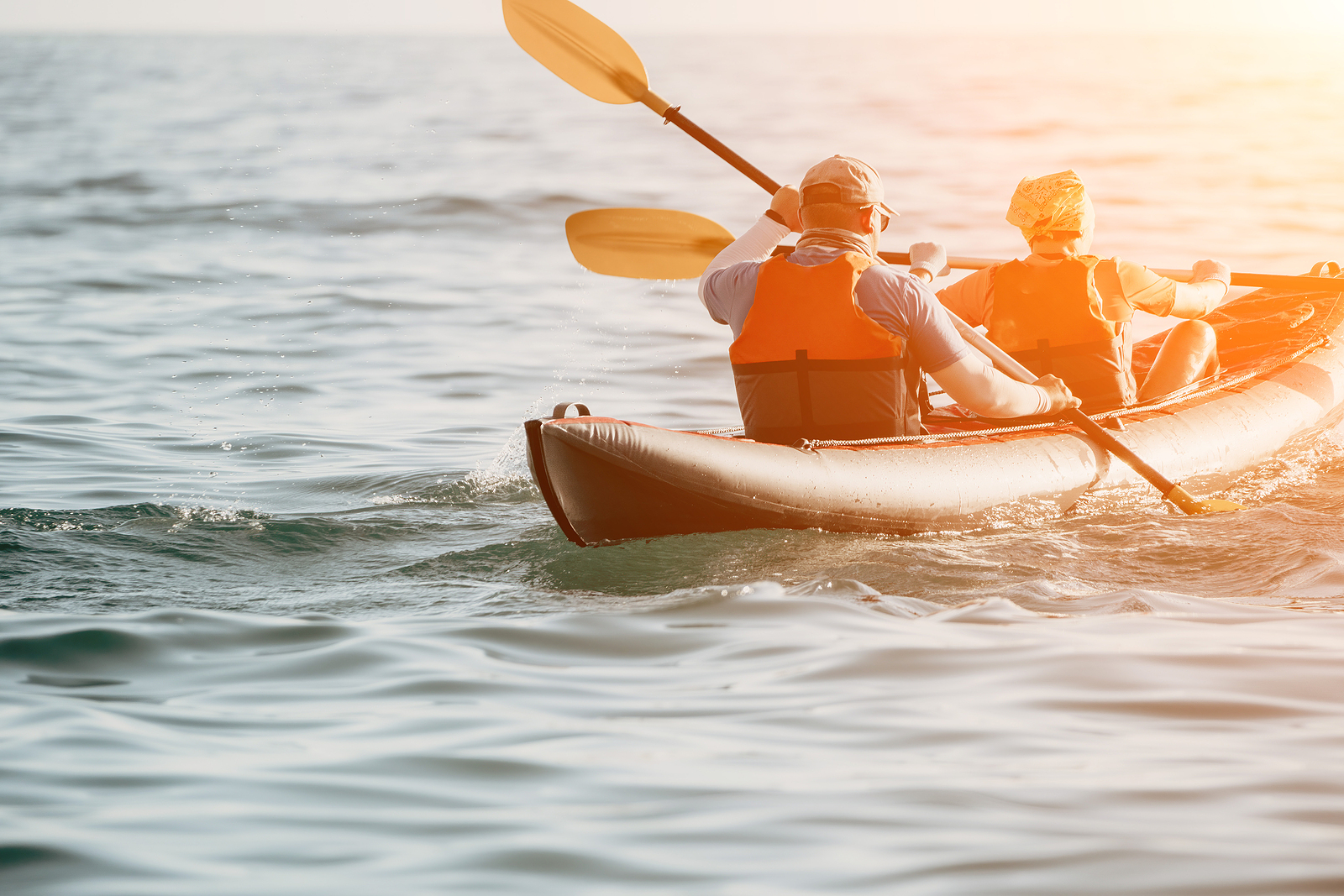
Cons
- Speed: Inflatable kayaks are generally slower than hard-shell kayaks due to their design. They could be better for those looking to cover long distances quickly.
- Stability: Inflatable kayaks can be less stable than hard-shell kayaks, especially in rough conditions. They are more susceptible to wind and waves, making them difficult to control.
- Puncture Risk: While most inflatable kayaks are durable, they are still at risk of puncture. A small puncture can quickly turn into a large leak, making it difficult to stay afloat.
- Maintenance: While inflatable kayaks require minimal maintenance, they do need to be cleaned and dried thoroughly after each use to prevent mold and mildew from forming. They also need to be appropriately stored to prevent damage.
Overall, inflatable kayaks are an excellent option for those looking for a portable, affordable, easy-to-use kayak. However, there may be better options for those looking to cover long distances quickly or those planning to use their kayak in rough conditions.
Frequently Asked Questions
Are inflatable kayaks safe for use in whitewater?
Inflatable kayaks can be safe for use in whitewater, but it depends on the specific model and the skill level of the kayaker. Some inflatable kayaks are designed specifically for whitewater use and are made with durable materials that can withstand the rigors of fast-moving water. However, novice kayakers should exercise caution when using inflatable kayaks in whitewater and should always wear appropriate safety gear, such as a personal flotation device (PFD) and a helmet.
What precautions should I take to ensure safety when using an inflatable kayak?
To ensure safety when using an inflatable kayak, kayakers should always wear a PFD and other appropriate safety gear, such as a helmet and protective footwear. They should also check the weather forecast before heading out and avoid kayaking in rough or stormy conditions. Additionally, kayakers should be familiar with the water they will be in and avoid areas with strong currents or other hazards.
What is the weight capacity of most inflatable kayaks?
The weight capacity of most inflatable kayaks varies depending on the specific model. However, many inflatable kayaks have weight capacities of between 250 and 500 pounds. It is essential to check the weight capacity of an inflatable kayak before purchasing it to ensure that it can safely accommodate the kayaker and any gear or equipment it carries.
How long do inflatable kayaks typically last?
An inflatable kayak’s lifespan depends on various factors, including the quality of the materials used to make it, how well it is maintained, and how often it is used. However, many inflatable kayaks can last several years with proper care and maintenance.
What types of materials are used to make inflatable kayaks?
Inflatable kayaks are typically made from various materials, including PVC, nylon, and polyester. PVC is a common material used in inflatable kayaks because it is durable and can withstand exposure to the elements. Nylon and polyester are also popular materials because they are lightweight and easy to pack.
What are some common causes of punctures or leaks in inflatable kayaks?
Common causes of punctures or leaks in inflatable kayaks include exposure to sharp objects, such as rocks or sticks, overinflation, and improper storage. To prevent punctures or leaks, kayakers should avoid dragging their inflatable kayaks over rough or sharp surfaces and should store them in a cool, dry place when not in use. They should also be careful not to overinflate their kayaks, which can put undue stress on the seams and valves.





